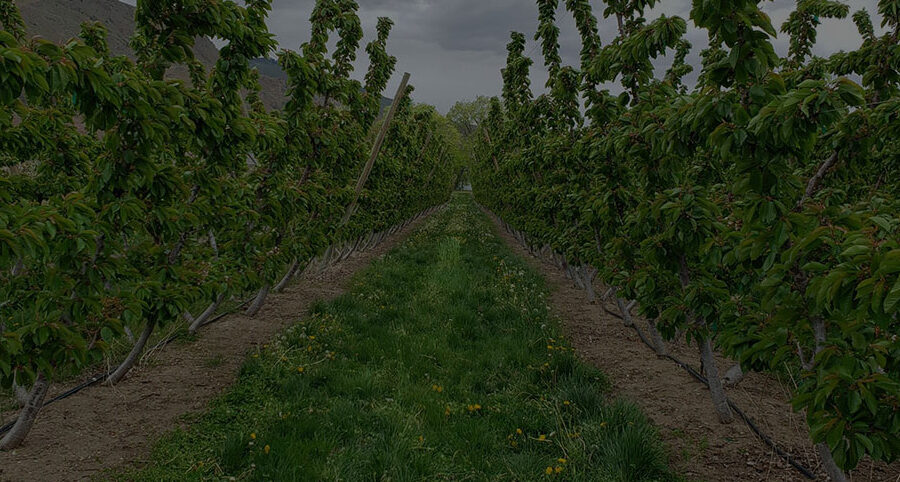Why is soil health important? Understanding your soil is an indication of how well your crops will produce and the susceptibility to disease and plant pathogens. Soil testing is suggested a minimum of every 3 to 5 years.
- Spring and summer soil test – analyzing your crops early and throughout the growing season will provide fertilizer recommendations to increase productivity.
- Fall soil test – conducted after harvest, late season analyses reflect how many macro- and micro-nutrients were processed by the crop in the past growing season. Fall soil tests determine which nutrients, if any, were lacking, and gives you time to plan nutrient applications or companion crops for the upcoming growing season.

Cascadia has a complimentary soil testing program for farms and home gardeners. Our staff provides soil health conservation practice recommendations and information about financial assistance programs to give you optimal yields. Eligible farms and gardens may receive one free soil test.
- Farms, including orchards, vineyards, pastures, produce, and flowers, that earn a commodity from their crop are eligible to receive one soil test (0-12”) analysis to a certified laboratory.
- Livestock Farms for personal use are eligible for one soil test analysis to a certified lab if located in proximity of a stream, river, or creek.
Lab reports include fertilizer recommendations based on crop type, pH, organic matter, nitrogen, phosphorous, potassium, sulfur, boron, zinc, and manganese levels. We do not cover tests for heavy metals or pollutants.
- Home Garden in-ground beds are eligible to receive a Soil Savvy test kit to learn about the nutrient content and pH to increase productivity. Raised beds are not eligible.
- Grass Lawns are eligible for a Soil Savvy test kit if the location lies within 1-mile of a stream, river, or creek, and fertilizer recommendations are desired.
Not Eligible? Landowners that do not meet our program criteria may be interested to purchase a Soil Savvy test kit online or submit a sample to a PNW Soil Testing Lab.

It is Hard to Believe…
One teaspoon of healthy soil contains 1 billion microbes! Microbes are important because they cycle major nutrients required for plant productivity, such as nitrogen, potassium, and phosphorous. Nitrogen (N) gives plants their green foliage, Phosphorus (P) grows strong roots, and Potassium (K) contributes to robust growth. Microbes can consume major greenhouse gases, such as carbon dioxide, methane, and nitrous oxide, sequestering it in the soil. The risk of plant disease can be reduced in soils with a high diversity of microscopic cells. The soil microbes can even act as a filter, purifying the environment of pollutants and toxins. Plants in nutrient-rich and species diverse soils provide better plant growth and productivity.
Nitrogen is a particularly important nutrient.
Nitrogen is the most frequently deficient nutrient in non-legume plants and is readily applied to plants globally. The largest source of nitrogen used by plants is N2, which comes from the atmosphere. Since most plants cannot use this form of free nitrogen, it must be converted into a useful nitrogen compound for plant uptake. The conversion process is known as nitrogen fixation, where N2 is converted into ammonium NH4+. Nitrogen fixation is done through a variety of processes, both natural (nitrogen-fixing bacteria) and synthetic (Haber-Bosch process).
Most of the natural transformations happen by microorganisms in the soil, and cycle through the soil organic matter (SOM). SOM is an important part of the soil that consists of plant or animal tissues in various stages of decomposition. This part of the soil is also rich in microorganisms. There are a variety of other ways to add nitrogen to soil, but the best practices aim to keep nutrients cycling in the soil by increasing the amount of organic matter.

Soil pH influences how your garden grows.
Soil pH is the acidity or alkalinity of the soil. The pH scale ranges from 0 (extremely acidic) to 14 (extremely alkaline), with 7 being neutral. Most cultivated plants thrive when the soil pH is slightly acidic, a pH between 6.2 and 6.8, because it gives plants access to most nutrients. Some crops and flowers, like blueberries and rhododendrons, demand a higher acidic pH ranging from 4.5 to 5.5.
Soil pH is important because it can affect the availability of nutrients and the plant’s ability to uptake nutrients. It can also affect the micoorganisms, pathogens, and water within the soil. Ultimately, soils that are either too acidic or alkaline can stunt plant growth and increase disease. If the soil is too acidic, the common solution is to add lime, which is alkaline and made of calcium- and magnesium- rich materials.

Adjusting your soil pH can be attempted after testing for the current level. Generally, a lime application is mixed into the soil in the fall to raise a pH level. Lime is comprised of a mix of calcium carbonate and magnesium. Sulfur, peat moss, and compost can be applied to lower a pH level. Limestone and sulfur can be purchased in pelletized or powdered containers. Wood ash is a natural substitute for lime to raise soil pH, with a pH range of 10 to 12. It is advised to not spread wood ash on already alkaline soils or incorporate too much into neutral to slightly acidic soils as it may be detrimental to your plants.
It is important to know your soil texture too since soil parent material influences pH. Clay soils require more material to adjust pH due to the charged surfaces of clays making them less susceptible to change, whereas sand particles need less material to change the pH level. On commercial farms, soil pH levels are often monitored annually, even multiple times throughout the growing season, to constantly balance soil pH levels for optimal crop production.
